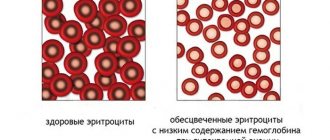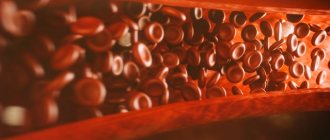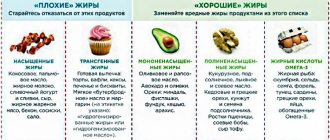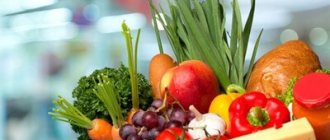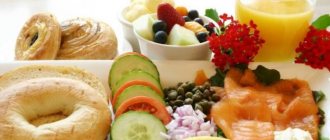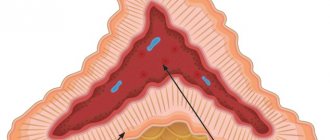What to Avoid with Dystonia
VSD is a disease that is accompanied by disturbances in the proper functioning of the autonomic part of the central nervous system. In different people, dystonia manifests itself with different symptoms, in some – increased or decreased blood pressure, in others – sudden swings in mood.
To reduce the load on the cardiovascular and nervous systems, experts have created a list of what should not be done during VSD:
- smoke;
- drink a lot of alcoholic drinks;
- overeat;
- get nervous tension;
- drink a lot of caffeinated drinks;
- limit physical activity;
- take different types of stimulants.
Vitamins for VSD
Food for VSD should be rich in vitamins that improve the functioning of the nervous system. These include elements B (B6, B12 and B5) and C (ascorbic acid). Vitamin C promotes the synthesis of collagen, which gives elasticity to the walls of blood vessels. Its deficiency causes fatigue, lethargy, loss of energy and concentration. Ascorbic acid is found in:
- citrus fruits;
- sauerkraut;
- fruits (kiwi, citrus);
- vegetables (broccoli, Brussels sprouts);
- berries (sea buckthorn).
Vitamin B6 promotes the synthesis of protein into fats and carbohydrates, producing energy. If this substance is not enough, then the risk of cardiovascular diseases and disruption of the nervous system increases. It is found in whole grains (oatmeal, buckwheat, brown rice), bananas, legumes and walnuts.
Cyanocobalamin (B12) normalizes the functioning of nerve endings and metabolism. If its content in the body is insufficient, then sensitivity in the limbs disappears, reactions slow down, lethargy and weakness appear. B12 is found in:
- beef and its offal (liver);
- dairy products (low-fat cottage cheese, etc.);
- fish (mackerel, sea bass, herring, etc.);
- eggs.
Pantothenic acid (B5) increases the body's resistance to stress. B5 is found in egg yolks, nuts and oatmeal.
Stress
The impact of stress on the nervous system is great; it disrupts the balance in the psycho-emotional sphere of the nervous system, causing the appearance of:
- irritability;
- anxiety;
- fear that has no objective reasons.
Situations that traumatize the human psyche aggravate the course of dystonia. The constantly ongoing stressful reality is especially dangerous for people suffering from VSD. Therefore, for such patients, any activity associated with constant stress and anxiety is strictly contraindicated.
VSD leads to the fact that a person becomes extremely vulnerable; he can hardly endure any aggression, pressure and moral influence.
Important! Modern life makes it almost impossible to avoid stress. Therefore, you should change your own attitude towards them, trying to ensure that such situations do not leave a mark on the nervous system.
To reduce the impact of stress on the psyche, it is important to be able to disconnect from reality, which is helped well by the techniques of meditation, self-soothing and relaxation.
Gastritis and vegetative-vascular dystonia
In many cases, symptoms of VSD are manifested by disorders of the gastrointestinal tract. Abdominal pain, belching, stool disorders and even vomiting appear. Often, VSD and gastritis go hand in hand, and the primary cause leading to gastritis is usually stress.
In some cases, dystonia is only disguised as a stomach disease. However, traditional treatment does not lead to relief. In this case, it is vegetative-vascular dystonia that needs to be treated. To do this, it is recommended to contact not a therapist and gastroenterologist, but a neurologist and psychotherapist.
Gastritis and vegetative-vascular dystonia (vsd) symptoms
In many people, the stomach is affected due to malfunctions of the nervous system. Stress, depression, anxiety, and vegetative-vascular dystonia increase the likelihood of gastritis. How to recognize the symptoms of gastritis with VSD? First of all, it is a diagnosis of exclusion. Organic pathology is initially excluded. Headache and dizziness can occur with high blood pressure/stroke/neuroinfections, and with VSD.
Symptoms of VSD are also symptoms of other diseases that need to be excluded, and then VSD can be diagnosed. Chronic gastritis may be characterized by symptoms that a person usually does not associate with the stomach. For example, frequent headaches that are associated with vegetative-vascular dystonia or migraine may actually be provoked by chronic gastritis. There are many causes of migraines - gastritis may be another.
Some experts generally argue that in the presence of vegetative-vascular dystonia, it is necessary to check the stomach, since all its signs and its very development are signs and consequences of chronic gastritis. When gastritis is cured, the symptoms of VSD also disappear. The combination of morning sickness, headache and low blood pressure may also primarily indicate gastritis. In this case, there may not be any pain symptoms. But an experienced doctor will immediately suspect not VSD or neurology, but gastritis.
Symptoms of gastritis with vegetative-vascular dystonia:
- anemia; brittleness and dryness of hair;
- brittleness and splitting of nails; weakness;
- irritability; drowsiness;
- weight loss or underweight in children;
- growth retardation in children; poor appetite.
If you have been diagnosed with VSD and gastritis, to improve your general condition, you must first avoid stressful situations and get checked by a neurologist
Overweight
Excess weight has a negative impact on the condition of the heart and blood vessels:
- disrupts metabolism;
- causes increased sweating;
- promotes the development of pathologies in the functioning of various organs;
- worsens the course of dystonia;
- disrupts metabolism.
The presence of excess weight makes the blood vessels vulnerable, causing them to subtly react to changes in blood pressure, causing cold extremities, chills and other unpleasant symptoms.
People with VSD are contraindicated:
- binge eating;
- deficiency in the daily diet of foods containing magnesium, potassium and other vitamins and minerals;
- lack of dairy products;
- lack of balance between carbohydrates, proteins and fats;
- frequent use of salts and marinades.
To maintain the correct weight, you should follow the following rules:
- prepare food in ways that maximize the beneficial properties of products;
- eat those dishes that bring pleasure (choosing acceptable ones among healthy ones);
- do not eat until you feel completely full;
- eat in small portions;
- sit down at the table at least 5-6 times a day;
- stop eating 3 hours before going to bed.
How to get rid of VSD and panic attacks
The main methods that can help with vascular dystonia with sympathoadrenal crises are non-drug. Among them, a special role belongs to psychotherapy, proper nutrition, breathing relaxation exercises, and physiotherapeutic methods. Medicines are prescribed in short courses.
A dietary diet can help the functioning of the nervous system, providing it with the necessary microelements, vitamins and antioxidants. To do this, you need to include the following products in your daily menu:
- unsalted cheese, cottage cheese, tofu;
- fish of moderate fat content, seafood;
- turkey and veal;
- legumes, bran, brown and black rice, buckwheat, oats (except cereal);
- dried apricots, bananas, avocados;
- leafy greens, eggplant, carrots;
- nuts, vegetable oil;
- citrus fruits, kiwi and sweet peppers.
It is recommended to avoid any artificial stimulants - coffee, strong tea, energy drinks, sugar, alcohol. Strong brews, confectionery products, fatty and fried foods, any canned food, smoked foods and marinades are not beneficial.
Psychotherapy
Taking into account the fact that more and more research results are being received proving that the main role in the development of VSD belongs to disorders of higher nervous activity, panic attacks have moved from the management of cardiologists to psychotherapists. For treatment use:
- family therapy,
- psychoanalytic consultations,
- cognitive-behavioral correction.
As a result, the patient needs to form a strong belief that attacks are not dangerous to life and health, as well as the possibility of preventing and stopping them. It is also necessary to reconsider the attitude towards traumatic situations and identify triggers to neutralize them.
Breathing techniques
Many special types of breathing can be learned by practicing yoga and relaxation and meditative techniques. Even simple fixation on the duration of the phases of the respiratory cycle can smooth out autonomic disorders.
When you feel the precursors of an attack, you need to stretch the length of inhalation and exhalation as smoothly as possible so that the latter is as long as possible. After each breathing movement, a pause of several seconds is needed.
Treatment with medications
Psychotropic drugs are recommended in rare cases, as their effectiveness is low.
Moreover, they have pronounced side effects, and the results begin to appear after a month of regular use; many patients experience an exacerbation of the disease after the first week of using the medications.
The following pharmacological groups are prescribed:
- tricyclic antidepressants (Amitriptyline, Anafranil);
- serotonin uptake inhibitors (Paroxetine, Prozac, Cipramil);
- tranquilizers (Gidazepam, Clonazepam);
- sedatives - Glycine, Barboval, tinctures of motherwort and valerian.
We recommend reading the article about neurocirculatory dystonia.
From it you will learn about the causes of development and types of pathology, symptoms, diagnosis and treatment, prognosis in children and adults. And here is more information about the vagoinsular crisis.
Vegetative-vascular dystonia occurs when the control of vascular tone and cardiac activity by the autonomic nervous system is impaired. One of the manifestations of increased activity of the sympathetic department is panic attacks.
. They are associated with a massive release of stress hormones into the blood.
Manifestations include: unreasonable fear of death, increased blood pressure, tachycardia, rapid and shallow breathing, sweating, and lightheadedness. For treatment, predominantly non-drug methods, lifestyle correction, and psychotherapy are used.
Fainting occurs with vascular dystonia in severe cases. With VSD, you can prevent them by knowing simple rules of behavior. It is also important to understand how to provide assistance for fainting from vegetative-vascular dystonia.
Blood pressure increases at night due to illness, stress, and sometimes apnea and panic attacks are added to them. The reasons for sudden jumps in blood pressure during sleep may also lie in age. For prevention, long-acting drugs are chosen, which is especially important for older people.
A rather unpleasant dystonia of the mixed type, because it simultaneously manifests itself as cerebral dystonia of the hypotonic and hypertonic type. Vegetative-vascular dystonia requires treatment with sedatives; the syndrome can be relieved by lifestyle changes.
For patients, sympathoadrenal crisis often becomes a real problem. Symptoms manifest themselves in the form of tachycardia, panic attacks, and fear of death. Treatment is prescribed jointly by a cardiologist and a psychologist. What to do if it occurs against the background of diencephalic syndrome?
Neurocirculatory dystonia can occur in children, adolescents, and adults. Neurocircular vascular dystonia syndrome can be of several types. The causes are important for diagnosis and treatment.
The identified vagus nerve during VSD is called vagoinsular crisis. Symptoms are easily confused with other manifestations. Treatment of vagoinsular vegetative crisis consists of taking pills, general lifestyle changes, and physiotherapy.
For VSD, Tonginal is often prescribed, the use of which helps normalize blood pressure and vascular tone. The instructions for the drug indicate that only drops can be taken; tablets are not available today. Finding drug analogs can be difficult.
Autonomic dysfunction occurs due to a number of factors. In children, adolescents, and adults, the syndrome is most often diagnosed due to stress. Symptoms can be confused with other diseases. Treatment of autonomic nervous dysfunction is a complex of measures, including medications.
When pressure changes, nausea and vomiting occur. This is how brain tissue reacts to changes in readings. At what pressure change exactly do they occur - low, low, high, high? Why is dizziness added?
Alcohol and smoking
People with a history of VSD are contraindicated to drink alcohol and smoke tobacco products. These substances have a detrimental effect on the cardiovascular system, which already suffers from dystonia.
Alcohol can act as a provocateur for the development of unpleasant symptoms. For example, in patients with hypertensive VSD, taking even a small dose of alcoholic beverages leads to a sharp jump in blood pressure and a deterioration in overall well-being.
There is a misconception that cigarettes and alcohol increase a person’s resistance to stress and help him relax. In fact, the body receives only a short-term, imaginary respite, which is fraught with the development of serious complications from the central nervous system.
Hypotonic type
As for the hypotonic type of VSD, when blood pressure is below normal, the diet should be aimed at:
- overcoming weakness;
- fight against dizziness;
- overcoming excessive sweating.
The cause of the disease is most often heredity. In addition, this type of dystonia threatens people who lead a sedentary lifestyle.
Energy that accumulates and is not wasted anywhere sooner or later leads to a state of weakness and limited performance.
Especially useful for these people are foods that contain a lot of potassium and magnesium. We are talking about eggplants, greens, beans, sorrel. Among vegetables, those containing a lot of ascorbic acid and beta-carotene are especially useful. Along with citrus fruits, these can be bananas or pineapples.
Products - semolina, potatoes - containing starch are also considered healthy.
Since anemia is often observed with hypotension, it is necessary to eat buckwheat porridge, walnuts, and meat (liver and kidneys).
For hypotonic VSD, these products can be seasoned with spices - horseradish, mustard, black pepper, ginger and cinnamon. Approximately once a week it is recommended to consume cheeses, herring, marinades and pickles. Due to the fact that moisture is retained due to salt, blood pressure rises, that is, it normalizes.
Insufficient duration of sleep and rest
Another important contraindication in the presence of vegetative-vascular dystonia is nights deprived of proper sleep and rest. If a person does not sleep continuously for 8 hours, his body will work at its limit, which is fraught with the development of serious complications.
Insufficient sleep time can undermine the functioning of the central nervous system and also deplete the strength of a person suffering from dystonia.
When going to bed, it is important to follow a number of simple rules:
- cool and humid air in the bedroom;
- comfortable mattress and comfortable bed linen;
- darkness in the room, absence of extraneous sounds and a working TV;
- going to bed and getting up at about the same time.
Compliance with these rules will allow a person to fully rest, gain strength and prevent exacerbation of dystonia.
Lack of physical activity
Without physical activity, you cannot achieve a full life. Properly organized sports activities allow you to:
- get rid of bad thoughts and emotions;
- maintain muscle tone;
- relieve irritability and fatigue;
- cheer up.
A properly selected set of exercises will not tire a person suffering from VSD, which will provide a surge of strength and excellent mood that arises after the training.
Principles of proper organization of training for people with VSD:
- Mandatory measurement of blood pressure before and after training.
- Classes are held in the morning or afternoon, from approximately 16:00 to 19:00.
- Perform all exercises at a moderate pace, maintaining calm breathing.
- Refusal of active jumping and running.
- Reducing the pace of exercise when shortness of breath occurs.
- Preference for swimming, cycling, fitness, volleyball.
- Ban on wrestling, boxing, tennis and weightlifting.
Important! Physical exercise, even therapeutic, is not indicated for people who have problems with heart rhythm, angina pectoris, very high or extremely low blood pressure, or a recent hypertensive crisis.
Sample menu
| VSD form | Breakfast | Lunch | Dinner |
| Hypertensive | Oatmeal, boiled in milk, a cup of cocoa. | Cottage cheese casserole with raisins. A glass of apple juice. | A serving of soup, a steamed omelette, a slice of whole grain bread. A cup of green tea, 20-30 grams of marshmallows. |
| Hypotonic | Lentil porridge, a cup of coffee, blackberry mousse. | Cheesecakes with strawberry jam, a cup of tea. | Fish soup, potatoes, a cup of ginger tea with cinnamon. |
| VSD form | Afternoon snack | Dinner |
| Hypertensive | Any fermented milk product, berries, a glass of compote, cookies. | Millet with pumpkin, boiled in milk. Apple with honey, baked in the oven, a glass of kefir or fermented baked milk. |
| Hypotonic | Pancakes with cabbage. A cup of mint tea. | Oatmeal with dried apricots, freshly squeezed juice of any citrus fruit. If you want to eat before bed - a glass of kefir. |
Nutrition for dystonia contraindications
To prevent weight gain, it is important to follow the principles of proper nutrition. This is especially important for people suffering from vegetative-vascular dystonia, because nutrition can affect the condition of blood vessels, making them very fragile due to excess cholesterol.
People with VSD should limit:
- pickled vegetables;
- sausages;
- spicy and salty dishes;
- fatty meats;
- sauces and ketchups;
- alcohol;
- instant and semi-finished products;
- drinks with high caffeine content;
- a large number of spices.
The foods included in this list do not need to be completely removed from the diet. They can be consumed in limited quantities, as rarely as possible, so as not to create a large burden on the body.
It is important to include the following foods in your diet:
- seeds and nuts (in small quantities);
- carrots as a source of retinol;
- apricots or dried apricots, beneficial for their high content of magnesium and potassium;
- not too fatty meats and seafood to replenish protein.
Minerals
The presence of minerals is important: magnesium, zinc, sodium and selenium. It is almost impossible to classify foods according to the presence of vitamins and minerals in them. It is better to talk about the predominance of one or another element in what you need to eat with vegetative-vascular dystonia.
The most potassium is found in dried fruits, buckwheat porridge, legumes and vegetables (eggplant and carrots). Sodium is found in sea salt, meat and its by-products, and fish. Legumes (beans, peas), leafy vegetables (spinach, lettuce), fruits (plums, apples, bananas) and grains (buckwheat, millet) are rich in magnesium. Selenium is found in seafood (seaweed, squid, shrimp and oysters), cereals (oatmeal, buckwheat, corn), mushrooms and meat.
Hormonal changes in the body
Hormones that maintain the balance of all systems have a significant effect on the body. Hormonal changes in the body, such as the onset of menopause, menstruation, pregnancy and breastfeeding, have a serious impact on the course of VSD.
In some people, these periods occur unnoticed, in others, the characteristics of the body cause exacerbation of the course of some symptoms of dystonia. In order to prevent a sharp change in the normal state, people suffering from VSD should follow all the recommendations of the attending physician during the periods indicated above, and also refrain from unauthorized use of hormone-containing drugs.
Climate change
Climate change has a serious impact on the human nervous system, including possible psychological discomfort and a change in the usual effect on blood vessels.
A sudden change of region of residence is unacceptable for people suffering from VSD. For them, such a situation can be fraught with an imbalance of power and the occurrence of mental breakdowns. Stress and climate change lead to neurological changes, which people with dystonia should avoid.
Diet for high blood pressure
In this case, the patient suffers from headaches and weakness, and quickly gets tired. If high tonometer readings are observed during VDS, then in order to avoid arterial hypertension it is necessary to review the list of foods consumed. Such patients are advised to limit the amount of coffee they drink (no more than 2 cups per day). In general, it is recommended to replace strong tea and coffee drinks with cocoa. The flavonol contained there will help reduce.
It is better to reduce the amount of alcohol consumed - no more than 2 servings per day, and give preference to red wine. Doctors advise avoiding strong broths based on fish or meat, which excite the nervous system. It is important to eat less table salt (no more than 4-6 grams) and add salt to already prepared dishes, and not in the process itself. It is recommended to exclude natural licorice from the diet for VSD.
Increased consumption will help regulate high levels:
- potassium (eggplants, apricots, tangerines, cottage cheese, etc.);
- magnesium (buckwheat porridge, leafy vegetables, bran, wheat germ, etc.).

